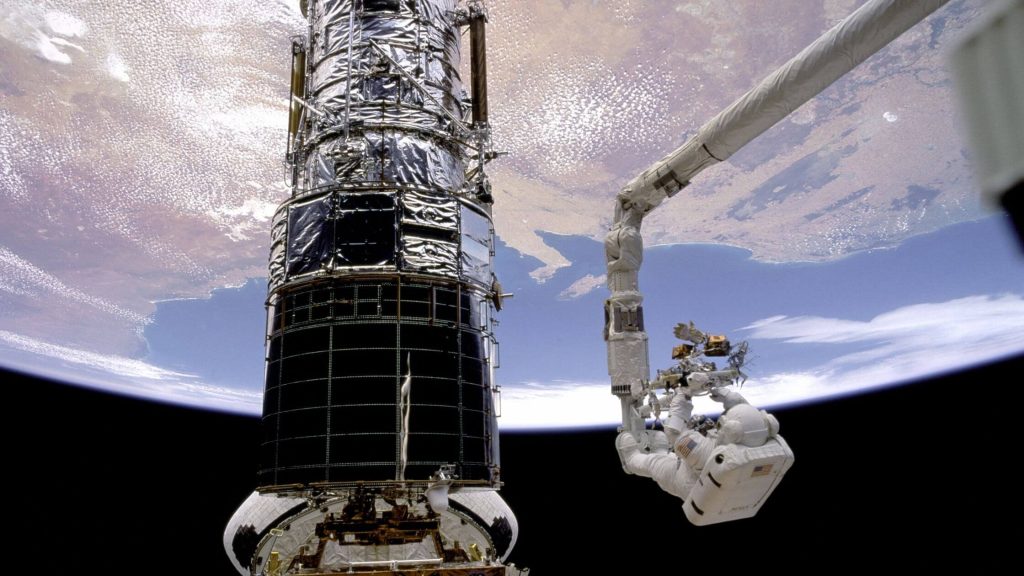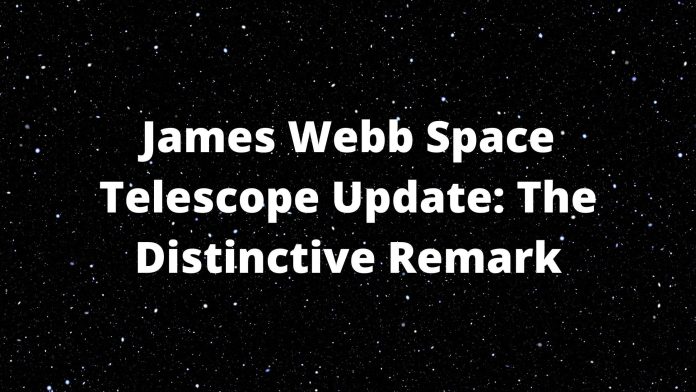Our most desired James Webb space telescope is finally in its orbit now. That’s a stable point in deep space and one million miles from earth. Although it’s still not fully prepared to take images of far galaxies, We got some updates about its first image. So what’s the James Webb space telescope update today? Yes, it really took a selfie of its own.
James Webb is the largest space telescope ever. Astronomers around the world were waiting for a long time to see it in action. Now it is close to showing us the oldest objects of the universe. It already sent us a selfie while aligning all the mirrors properly.
James Webb Space Telescope Update
This giant telescope was a 10 billion dollar project that took a long time to launch. So it is under observation every single second. Last month it entered the final orbital destination which is called Lagrange point. It is in the exact opposite direction from the sun. You know the process of mirror alignment is tough.
After the whole thing sets up perfectly, it needs to cool down before delivering the deep-space images. While the aligning process was going on, the telescope’s NIRcam helped scientists with a beautiful selfie. The selfie ensured that every mirror was aligned perfectly. However, it is still in the process of warming up everything.
So this selfie was the first picture from the legendary James Webb telescope. There is a powerful pupil lens inside the NIRcam which helps to take a selfie. This specialized lens was basically built to take pictures of the hexagon-shaped mirrors. Fortunately, till now, everything is working well.
Meanwhile, the team Nasa targeted a Sun-like star named HD84406. After the perfect selfie, their next priority concern was to ensure every mirror can separately take pictures of one single object. That’s the reason they chose HD84406. As it is a testing image, it would not be that detailed.
This tasting image would be a mosaic of the Sun-like star that is taken by 18 mirrors differently and coordinated into a single image. You can’t expect to see the nuclear blasts of the star. Here the star will look like a dot.
James Webb telescope key facts:
Launch date & time | 7.20 am EST, December 25, 2021. |
Launch vehicle | Ariane 5 |
Mission duration | Max 10 years |
Total mass | 6200 Kg (including everything) |
Primary mirror diameter | 6.5m |
Primary mirror material | Beryllium coated with gold |
Primary mirror mass | 705kg |
Number of primary mirror tiles | 18 |
Mass of a single tile | 20.1kg only mirror, 39.48kg with assembly |
Wavelength | 0.6-28.5 microns |
Sun shield size | 21.197m X 14.162m |
Orbit | 1.5 million km from earth |
Operating temperature | > 50-kelvin |
Destination | Earth-sun Lagrange point 2 / L2 |
How powerful is the James Webb space telescope?
James Webb is equipped with 18 powerful golden mirrors. Compared to Hubble’s 2.4-meter single glass mirror, James Webb has 6.4 times more surface to capture light. It has been said that this telescope could probably give us a view of the beginning of the universe. Because it is claimed to be 100 times more powerful than the Hubble space telescope.
This claim might seem very hard to understand. But according to astronomers, it is really possible. Looking far in space is proportional to looking back in time. So the further you look in space, the past you’ll see. Icarus is the farthest star Hubble could capture. So undoubtedly James Webb will take it to a next level.
According to Nasa, James Webb is so powerful that it can capture the heat of a bumblebee from the distance of the moon. That defines how powerful this telescope is. It is supposed to show us the very first stars that formed after the big bang.
Our universe is hiding uncountable mysteries. At this time the James Webb space telescope is our highest-end technical support to discover something new.
Where is the James Webb telescope?
To prevent all types of distortions, We sent James Webb to a huge distance from earth. It is way further than our Hubble space telescope. We sent it at a distance of almost 1 million miles from earth. The destination is a very specific region in deep space where gravity is stabler than other places. We call it Earth-Sun Lagrange point 2.
The Lagrange point L2 is in the opposite direction of the Sun from Earth. Lagrange points are best for reducing the fuel consumption of a spacecraft. L2 is the best place where the telescope will remain safe from the space junks and the heat of the Sun.
The carrier of this telescope launched on December 25, 2021. After a few months now it is at its destination and ready to start exploring.
How long will the James Webb space telescope operate?
According to Nasa, James Webb is built to serve for 5 to 10 years. You know Hubble was meant to operate for 15 years. It launched in 1990. After getting a few updates it is still working well. Moreover, Hubble is supposed to serve 15 more years.
Seeing that we can expect James Webb will be on service more than the claimed times. But the problem is that James Webb is so far away that it can never be repaired. So it won’t be able to serve longer as Hubble. We predict that James Webb will help us to explore the cosmos for at least 20 years.
The environment in space is pretty harsh. It is really hard to say how much a human-made object will last there. This telescope is a result of long studies and research. Scientists have given their decades of hard work to it.
James Webb is built by studying every possible threat that may occur. It is tested over and over by creating such harsh environments. Not a single little mistake is tolerable here. That’s why it is tough enough to survive in deep space.
James Webb space telescope vs Hubble space telescope

Differences | James Webb | Hubble |
Primary view | Inferred | Optical & Ultraviolet mainly |
Orbit | Earth-Sun Lagrange point L2 | Close to earth |
Distance from earth | 1.5 million kilometers | 547 kilometers |
Mirror dimension | 6.5 meters | 2.4 meters |
Mirror material | Beryllium coated gold | Solid glass |
Primary mirrors | 18 hexagon-shaped tiles | Single mirror |
Weight | 6200kg | 10800kg |
Reachability | Very first stars formed after the big bang. (probably) | First galaxies formed after the big bang |
Summary
James Webb’s space telescope is one of the most historical inventions of humans. To make it perfect NASA took a long time to build it. However, we are all waiting to see the universe in JWST’s eye. From mysterious nebulae to hyper galaxies, we will search for our answers everywhere.
It is really impossible to find out the reason behind life on this little planet. Over the years we have had a lot of theories. But the real reason is surely lying somewhere in the cosmos. Focus and hard work will take us there. We must not lose patience. For now, The selfie was our latest James Webb space telescope update.

